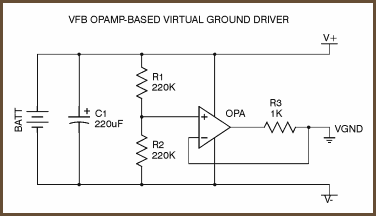mottl3y
New Head-Fier
- Joined
- Jan 20, 2008
- Posts
- 5
- Likes
- 0
I've been slowly progressing through my first ever headphone amp for the past week or so. I've followed Tangent's instructions for a CMoy, but I've used an LMH6642 to create the virtual ground.
I was having a problem with clipping. I don't have an O-scope, so I'm just assuming the static was due to clipping. If the source volume was way down, then the output was clean.
I read in heatmizer's post here that using some caps from V+/V- to ground helps for cases where the virtual ground can't source enough current. I stuck a pair of 220uF caps in, and the output sounds a lot better (still some quiet background hiss, but I'm hoping taking it off the breadboard will fix this). The caps fixing up a lack of current supply makes sense, but I have a couple of questions:
1. is there something wrong with my circuit in the first place if the LMH6642 was too weak for a CMoy (using a Burr Brown OPA2132)?
2. how do i know how big i want the caps? presumably a bigger cap means a bigger charge time - so the OPA2132 might not be getting its V+/V- as fast on first turn on which isnt really a problem, but it also means more electrons available for when they're needed.
This forum has been a great help in deciding on headphones, and with problem solving for my CMoy, thanks everyone!
m.
I was having a problem with clipping. I don't have an O-scope, so I'm just assuming the static was due to clipping. If the source volume was way down, then the output was clean.
I read in heatmizer's post here that using some caps from V+/V- to ground helps for cases where the virtual ground can't source enough current. I stuck a pair of 220uF caps in, and the output sounds a lot better (still some quiet background hiss, but I'm hoping taking it off the breadboard will fix this). The caps fixing up a lack of current supply makes sense, but I have a couple of questions:
1. is there something wrong with my circuit in the first place if the LMH6642 was too weak for a CMoy (using a Burr Brown OPA2132)?
2. how do i know how big i want the caps? presumably a bigger cap means a bigger charge time - so the OPA2132 might not be getting its V+/V- as fast on first turn on which isnt really a problem, but it also means more electrons available for when they're needed.
This forum has been a great help in deciding on headphones, and with problem solving for my CMoy, thanks everyone!
m.





